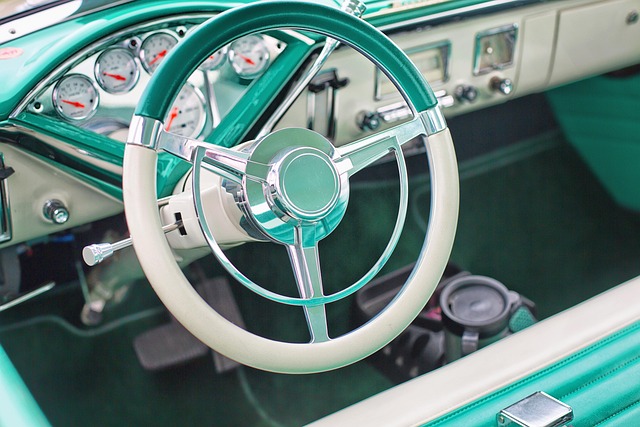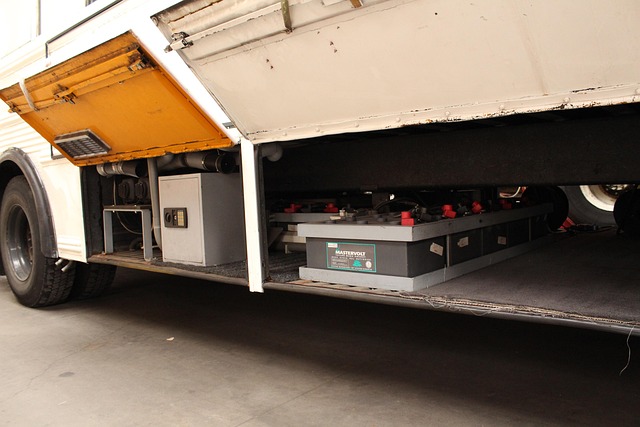Looking to register your car in California? This comprehensive guide walks you through the entire process, from understanding eligibility to receiving confirmation. First, ensure your vehicle meets the state’s requirements by checking its year and status. Next, gather essential documents, including proof of ownership and insurance. Then, perform a crucial step: dmv vin verification, which confirms your car’s unique identification number. After that, submit an application, pay fees, and finalize registration for smooth legal operation on California roads.
- Understand Eligibility for Car Registration in California
- Gather Required Documents for Vehicle Registration
- Perform DMV Vin Verification Process Step-by-Step
- Submit Application and Pay Fees for Car Registration
- Receive Confirmation of Successful Car Registration
Understand Eligibility for Car Registration in California

Before registering your car in California, it’s crucial to understand if you’re eligible. The California Department of Motor Vehicles (DMV) requires vehicles to meet specific criteria. Your car must be legally imported and comply with state emissions standards for registration. Additionally, a DVW (Department of Motor Vehicles) vin verification is mandatory, ensuring the vehicle’s identification number (VIN) is accurate and matches the make, model, and year listed on official records.
For those considering a used car purchase, a mobile VIN verifier or even a DIY VIN inspection can be valuable tools to confirm the vehicle’s history and ensure it hasn’t been reported as stolen or had previous damage. This step is vital for protecting yourself from potential fraud or buying a car with undisclosed issues.
Gather Required Documents for Vehicle Registration

Before you begin the registration process, it’s crucial to gather all the essential documents. One critical step is to undergo a DMV VIN verification, ensuring your vehicle’s unique identifier is valid and matches the make and model on record. This can typically be done online or in-person at a local California DMV office.
For smooth sailing during this process, bring along items like the title certificate, proof of insurance, and a valid driver’s license. Additionally, consider having a mobile VIN verifier app ready for instant and portable VIN inspection if any discrepancies arise—a handy tool to ensure you meet all requirements before submitting your registration application.
Perform DMV Vin Verification Process Step-by-Step

To begin the DMV Vin Verification process in California, visit your nearest Department of Motor Vehicles (DMV) office or use their online services. First, gather all necessary documents, including proof of ownership, vehicle registration, and identification. Then, fill out the required forms to initiate the verification.
Next, you’ll need to perform a visual inspection of the vehicle, checking for any obvious signs of damage or tampering. After that, it’s time for the core step: using a mobile vin verifier or conducting a manual vin inspection. This involves cross-referencing the Vehicle Identification Number (VIN) with national databases to ensure the vehicle’s history is clean and matches the information provided by the seller. Once this step is complete, submit your findings along with any supporting documentation to the DMV for final approval.
Submit Application and Pay Fees for Car Registration

After gathering all necessary documents and ensuring your car meets California’s requirements, it’s time to submit your application for car registration. You’ll need to visit a local California Department of Motor Vehicles (DMV) office or use their online services. Fill out the registration form completely, providing accurate information about your vehicle and yourself.
Along with your application, you’ll be required to pay the appropriate registration fees, which vary based on your vehicle type. You can typically pay by cash, credit card, or debit card. Some customers choose to utilize a mobile vin verifier to complete the DVV (DMV Vin Verification) process quickly and conveniently, ensuring a smoother registration experience.
Receive Confirmation of Successful Car Registration

After submitting your registration application, it’s crucial to receive confirmation of successful car registration from the DMV (Department of Motor Vehicles). This process typically involves a DMV VIN verification, ensuring that the vehicle identification number (VIN) is accurate and matches the specifications on file. You can facilitate this through a mobile vin inspection or using a mobile vin verifier for convenience.
Once confirmed, you’ll receive your registration documents in the mail, outlining all the details of your car’s registration, including any fees paid. Remember to keep these records handy for future reference and proof of ownership.
Registering a car in California involves understanding eligibility requirements, gathering essential documents, and successfully completing the DMV VIN verification process. By following these straightforward steps, you can ensure your vehicle is legally registered and ready for California’s roads. Remember to keep your registration up-to-date to avoid any penalties and maintain a smooth driving experience.



